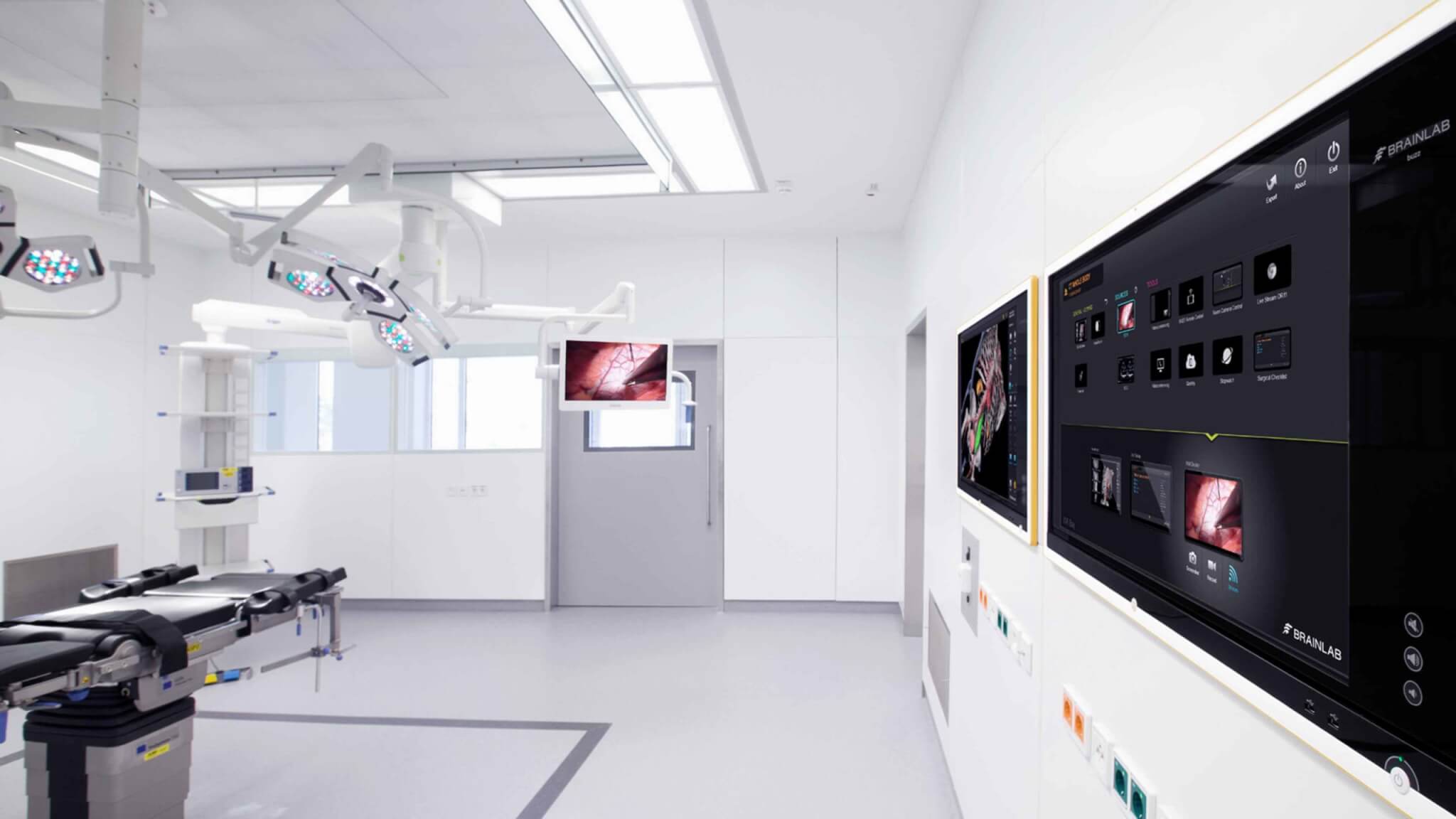“Since we started using Brainlab products in our new Digital O.R.s, overall surgical time is down 15%. We simply load the plans preoperatively onto the PACS and, through Brainlab Node, they are available in the operating room in seconds.”
About Jung-Stilling Hospital
Opened in 1947
800 hospital staff
400 beds
17,000 inpatients, 25,000 outpatients annually
Focus on modern medical technology and interdisciplinary treatments
Challenges
Even though devices in the O.R. worked well individually, they were challenging to use together as one system
Surgeons were losing time in the operating room by having to work with an array of unconnected systems
In many cases, patients were bringing their own digital scans from other medical centers, resulting in a mix of data that could not be read or worked with on one single software
Goals
Enable fast access to patient data for the whole surgical team preoperatively, intraoperatively and postoperatively
Integrate patient images into a single system that would allow the team to visualize, edit and document
Handle and edit patient images quickly, easily and directly in the O.R.
View, store and handle data precisely
O.R. Configuration
2 Buzz systems
1 Curve Navigation system
1 Node Server as central data node between O.R., office, and hospital archives
Elements DICOM Viewer for intraoperative viewing and planning
Elements DICOM Viewer 3D Stereo for pre-op case planning, teaching, and patient consultation
Elements Image Fusion, SmartBrush
Fibertracking
Highlights
Veit Braun, MD, Head of Neurosurgery at Jung-Stilling Hospital, shares some of his highlights since the Digital O.R. went into clinical use.
Precise and fast procedures—Planning a procedure prior to surgery is not only useful for the surgeon in order to be prepared, but it also saves time in the operating room. We can now plan and view the procedure in advance with Brainlab Elements
Interactive patient consultation—Showing patients their planned procedure in stereoscopic 3D really helps them feel well-informed and safe. DICOM Viewer 3D Stereo enables us to interactively involve patients in their own treatment
Keeping the team on the same page—The main value of Buzz in the O.R. is the possibility to centralize and enhance information about the patient all in one place. The Buzz display is large enough to allow the whole surgical team to view the plan
Expert consultation to ensure optimal outcomes—We also routinely use Buzz as a consultation system. If another surgeon needs a second opinion or has a specific question during surgery, all I have to do is start the conferencing application from my office PC and can immediately see the situation and provide my insights
Integrating and working with external patient images—Integrating patient images from other systems and hospitals is one of the biggest values we see in Brainlab technology. Now, when a patient is transferred to us from another ER, I receive the MRI and CT data digitally while they are still on their way. Their images are loaded to our PACS and available immediately on the Brainlab Elements Viewer. Before the patient even arrives, I can segment the images as needed and create on-the-fly 3D reconstructions, allowing me to evaluate the case and make a surgical plan. When the patient arrives, we can start right away, avoiding wait times that can be costly for both the hospital and the patient’s well-being
